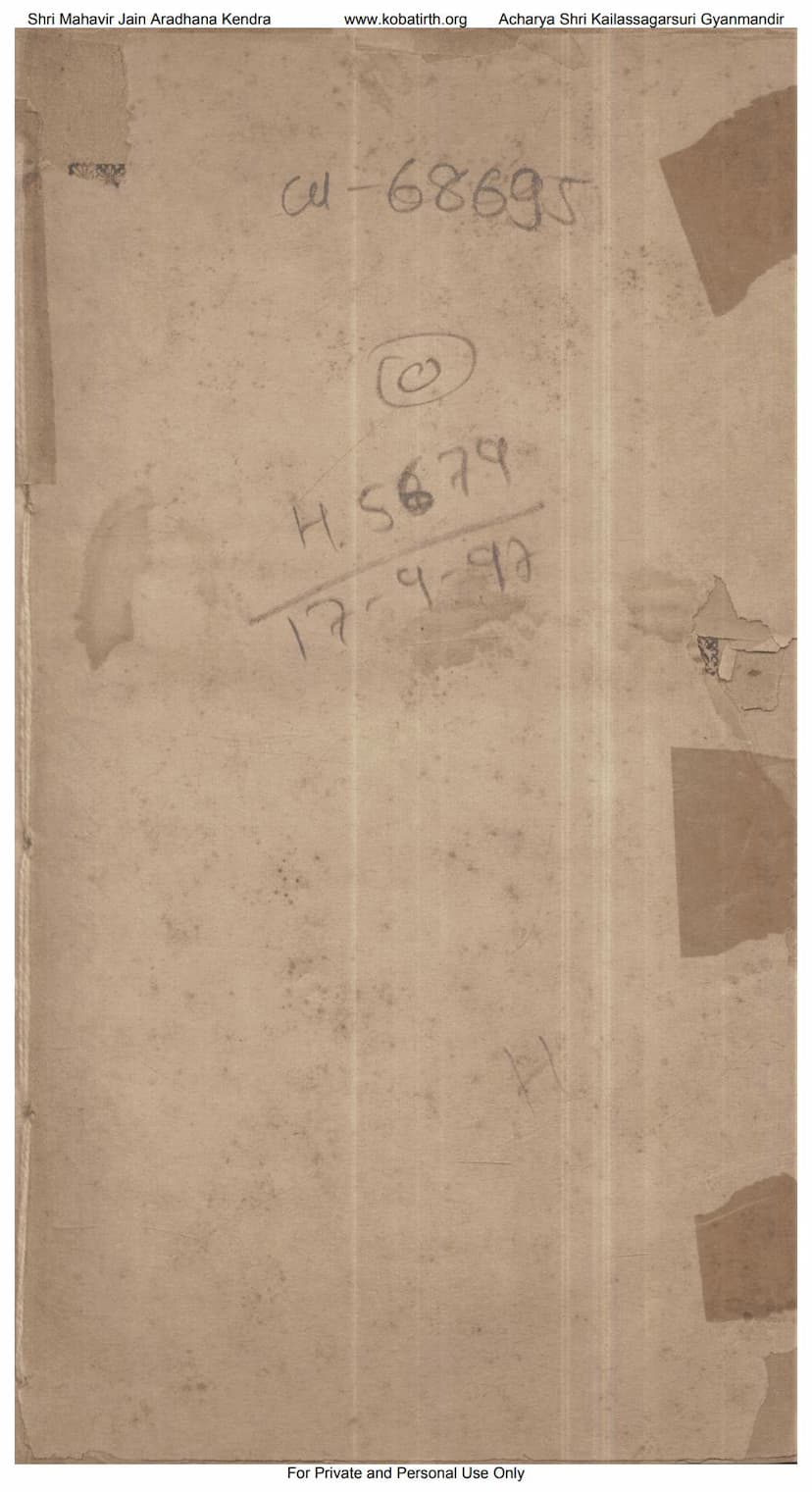Sankhyakarika
Added to library: September 2, 2025

Summary
This document contains the Sankhyakarika, a foundational text of the Sankhya philosophy, authored by Ishvara Krishna and accompanied by a commentary by Gaudapada Swami. Edited and published by Pandit Jibananda Vidyasagara, the text is presented in its second edition from 1892, published in Calcutta.
The Sankhyakarika begins by acknowledging the pervasive nature of suffering in the world, stemming from three sources: spiritual (body and mind), physical (external forces), and supernatural (divine influences). The desire for liberation from this suffering is the impetus for the philosophical inquiry.
The text then outlines the core tenets of Sankhya philosophy, which posits a dualistic reality composed of:
- Prakriti (Primordial Matter): This is the unmanifest, eternal, and uncaused source of the material world. It is composed of three gunas (qualities): Sattva (purity, illumination, pleasure), Rajas (activity, passion, pain), and Tamas (inertia, ignorance, delusion). Prakriti is described as the cause of the manifest world, undergoing transformations (parinama).
- Purusha (Consciousness/Spirit): This is the pure, unmanifest, eternal, and unchanging consciousness. Purusha is the observer, the experiencer, but not the doer. It is distinct from Prakriti and its modifications. The realization of this distinction leads to liberation.
The Sankhyakarika details the twenty-five tattvas (principles or categories) that constitute the Sankhya cosmology:
- Prakriti: The unmanifest source.
- Mahat (Intellect/Cosmic Mind): The first evolute of Prakriti, characterized by discriminative knowledge.
- Ahamkara (Ego/Self-Sense): Arises from Mahat, responsible for the sense of "I-ness."
- Five Tanmatras (Subtle Elements): Sound, touch, form, taste, and smell. These are the subtle essences of the phenomenal world.
- Eleven Indriyas (Sense Organs and Faculties):
- Five Cognitive Organs (Jnana Indriyas): Eyes, ears, nose, tongue, skin.
- Five Active Organs (Karma Indriyas): Speech, hands, feet, anus, generative organs.
- Manas (Mind): The organ of thought and deliberation, also considered an instrument of both cognitive and active functions.
- Five Gross Elements (Maha Bhutas): Ether (from sound), Air (from touch), Fire (from form), Water (from taste), and Earth (from smell). These are the constituents of the physical universe.
The text elaborates on the nature of these tattvas, their causal relationships (how one evolves from another), and the role of the three gunas in their functioning. It explains the process of creation as an evolution of the manifest world from Prakriti, driven by the presence of Purusha and the interplay of the gunas.
Key Philosophical Concepts Discussed:
- Causality (Satkaryavada): The principle that the effect pre-exists in the cause. The manifest world is an effect that is already present in Prakriti in a subtle, unmanifest form.
- Pradhana-Purusha Viveka (Distinction between Prakriti and Purusha): The core of Sankhya is the realization that Purusha is distinct from Prakriti and its products. This understanding is crucial for liberation.
- Bondage and Liberation: Bondage arises from the misidentification of Purusha with the modifications of Prakriti (intellect, ego, senses, body). Liberation (Kaivalya) is achieved by discriminating between Purusha and Prakriti, leading to the cessation of suffering.
- The Role of the Gunas: The constant interplay and modification of Sattva, Rajas, and Tamas are responsible for the diversity and evolution of the universe and the experiences of beings.
- Pramanas (Sources of Knowledge): The text discusses the valid means of knowledge, primarily Pratyaksha (perception), Anumana (inference), and Aptavacana (testimony of reliable sources).
The commentary by Gaudapada Swami likely clarifies the verses and provides deeper interpretations of the Sankhya doctrines, making them accessible to the reader.
In essence, the Sankhyakarika presents a systematic philosophical framework for understanding the nature of reality, the cause of suffering, and the path to liberation through the knowledge of the twenty-five tattvas and the ultimate distinction between the passive Purusha and the active Prakriti.